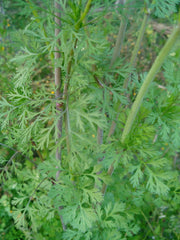Salvia officinalis, English Sage
A very ornamental plant, sage is commonly grown in the herb garden for culinary and medicinal purposes.
Plants need to be trimmed in late spring in order to keep them compact. They tend to degenerate after a few years and are best replaced after about 4 years. The leaves emit a unique pungent aroma when pressed.
A good companion for many plants, including rosemary, cabbages and carrots, the growing plant is said to repel insects. It is inhibited by wormwood growing nearby and dislikes growing with basil, rue or the cucumber and squash family.
Sage has a very long history of effective medicinal use and is an important domestic herbal remedy for disorders of the digestive system. Its antiseptic qualities make it an effective gargle for the mouth where it can heal sore throats, ulcers etc.
The growing or dried plant is said to repel insects, it is especially useful when grown amongst cabbages and carrots. It was formerly used as a strewing herb and has been burnt in rooms to fumigate them.
A good dense ground cover plant for sunny positions, though it needs weeding for the first year or two. They are best spaced about 60cm apart each way.
The leaves make excellent tooth cleaners, simply rub the top side of the leaf over the teeth and gums.
The plant is an alternative ingredient of 'QR' herbal compost activator. This is a dried and powdered mixture of several herbs that can be added to a compost heap in order to speed up bacterial activity and thus shorten the time needed to make the compost.
Requires a very well-drained light sandy soil in a sunny position. Prefers a calcareous soil. Dislikes heavy or acid soils. Succeeds in dry soils, tolerating drought once it is established. Sage can be killed by excessive winter wet and winter-planted bushes often die.
Sow March/April in a greenhouse. Germination usually takes place within 2 weeks. Prick out the seedlings into individual pots when they are large enough to handle and plant them out in early summer. In areas where the plant is towards the limits of its hardiness, it is best to grow the plants on in a greenhouse for their first winter and plant them out in late spring of the following year.
Edible uses
Leaves and flowers - raw or cooked. A very common herb, the strongly aromatic leaves are used as a flavouring in cooked foods. They are an aid to digestion and so are often used with heavy, oily foods. They impart a sausage-like flavour to savoury dishes. The young leaves and flowers can be eaten raw, boiled, pickled or used in sandwiches. The flowers can also be sprinkled on salads to add colour and fragrance.
A herb tea is made from the fresh or dried leaves, it is said to improve the digestion.
An essential oil obtained from the plant is used commercially to flavour ice cream, sweets, baked goods etc


![Photo By H. Zell (Own work) [GFDL (http://www.gnu.org/copyleft/fdl.html) or CC-BY-SA-3.0 (http://creativecommons.org/licenses/by-sa/3.0)], via Wikimedia Commons](http://www.openpollinated.co.uk/cdn/shop/products/1_a4b68bef-50e7-4a1b-b60b-7380669e3bc2_medium.jpeg?v=1510586905)
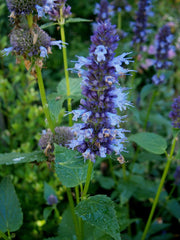
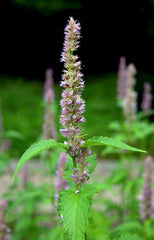
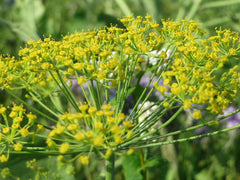
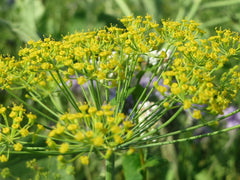
![Photo By H. Zell (Own work) [GFDL (http://www.gnu.org/copyleft/fdl.html) or CC-BY-SA-3.0 (http://creativecommons.org/licenses/by-sa/3.0)], via Wikimedia Commons.](http://www.openpollinated.co.uk/cdn/shop/products/1_004b3955-f8d0-43fc-b01e-54973bd991f7_medium.jpeg?v=1510586912)
